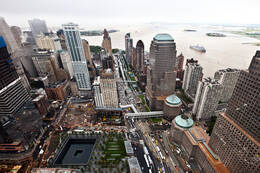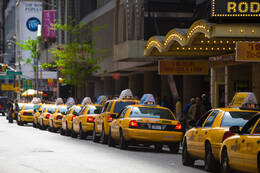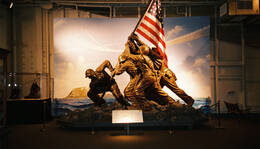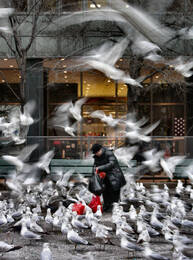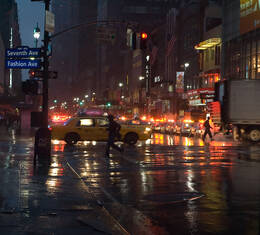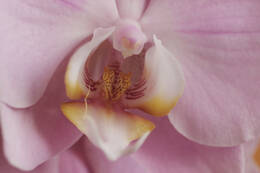9.11.01 Never Forgotten - v.II
US Supreme Court
75 views
Chief Justice William Howard Taft and the Associate Justices admired architect Cass Gilbert’s model for a new Supreme Court building in 1929. Taft had begun lobbying for a separate building as early as 1912, and redoubled his efforts when he became Chief Justice in 1921. Taft not only persuaded Congress to fund the nearly $10 million building, giving the Court its own home for the first time, but he also oversaw its planning and initial construction. When the cornerstone was laid in 1932, Chief Justice Charles Evans Hughes said of Taft, who had died two years before: “This building is the result of his intelligent persistence.” To a country sunk deep in the Great Depression, Chief Justice Hughes added: “The Republic endures and this is the symbol of its faith.”
Gleaming bone white and austere among its distinguished neighbors on Capitol Hill, its stately façade evoking the long-enduring glory of ancient Rome, the Supreme Court Building imposes a mood of decorum. The aura of formality is no accident.
When architect Cass Gilbert submitted his design in May, 1929, he planned “a building of dignity and importance suitable…for the permanent home of the Supreme Court of the United States.” Gilbert has been chosen by a commission led by Chief Justice William Howard Taft. Gilbert’s associates were Cass Gilbert, Jr., and John R. Rockart, with executive supervision by David Lynn, Architect of the Capitol.
Into the Building the architects put about three million dollars’ worth of marble. For the exterior walls alone a thousand freight car loads of flawless stone come from Vermont—along with a 250-ton slab specifically cut for sculptor James E. Fraser’s allegorical figures at the entrance.
Georgia marble was chosen for the outer walls of four courtyards that divide the building into a cross-shaped center core and a gallery of offices and corridors. Nearly square, the resulting structure is 92 feet high and stretches 385 feet on its longest side. The interior walls are faced with marble quarried in Alabama.
Opposite the formal entrance, at the east end of the aptly named Great Hall, is the Court Chamber proper—82 by 91 feet, with a coffered ceiling 44 feet high. Gilbert walled this imposing room with Ivory Vein marble from Spain. For the 24 massive columns he insisted on marble of a particularly delicate tint, called light Siena, from the Old Convent quarry in the Italian province of Liguria.
From Italy the rough stone went to a firm of marble finishers in Knoxville, Tennessee, who dressed and honed the blocks into 72 slightly tapered cylinders, 11 feet in circumference at the widest. Three sections went into each 30-foot column, to be topped by an Ionic capital.
Darker marble from Italy and Africa gives color to the floor. Against the marble the room gains richness from its fittings: tones of red in carpet and upholstery and heavy draperies, highly polished luster in solid Honduras mahogany, gleaming bronze latticework in gates to the side corridors. And in 1973, new lighting, new paint, and new gilding restored the ornamented ceiling to a brilliance time had since dimmed since its installation nearly 40 years before.
Like Taft, Gilbert did not live to see his dream building completed. He died in 1934. The Court held its first session in the new building on October 7, 1935.
Not everyone liked the new building. Associate Justice Harlan Fiske Stone, who later became Chief Justice, at first called it “almost bombastically pretentious…wholly inappropriate for a quiet group of old boys such as the Supreme Court.” One of the old boys reportedly said that he and his brethren would be “nine black beetles in the Temple of Karnak.” Another—undoubtedly thinking of exotic pomp rather than domestic party symbols—remarked that the Justices ought to enter it riding on elephants.
Such comments suggest how different men have regarded their own remarkable positions of power, prestige and responsibility in the life of the Nation. Off the bench their successors show a similar concern—how to maintain a sense of human perspective in the marble temple.
The Supreme Court Building, constructed between 1932--1935, was designed by noted architect Cass Gilbert, who is best known as the architect for the Woolworth Building in New York. The first session of the Supreme Court was convened on February 1, 1790, but it took some 145 years for the Supreme Court to find a permanent residence. During those years the Supreme Court lived a nomadic existence. Initially meeting in the Royal Exchange Building in New York, the Court established chambers in Independence Hall and later in City Hall when the national capitol moved to Philadelphia in 1790. The Court moved again when the Federal government moved in 1800 to the permanent capital in Washington. Since no provision had been made for a Supreme Court building, Congress lent the Court space in the new Capitol building. The Court convened for a short period in a private home after the British had used Supreme Court documents to set fire to the Capitol during the War of 1812. Following this episode, the Court returned to the Capitol and met from 1819 to 1860 in a chamber that has been restored as the Old Supreme Court Chamber. Then from 1860 to 1935, the Court sat in what is now known as the Old Senate Chamber. Finally in 1929, former President William Howard Taft, who was Chief Justice from 1921 to 1930, persuaded Congress to end this arrangement and authorize a permanent home for the Court.
At the laying of the cornerstone for the building on October 13, 1932, Chief Justice Charles Evans Hughes stated, "The Republic endures and this is the symbol of its faith." The building was designed on a scale in keeping with the importance and dignity of the Court and the Judiciary as a coequal, independent branch of the Federal government and as a symbol of "the national ideal of justice in the highest sphere of activity." Sixteen marble columns at the main west entrance support the portico and on the architrave above is incised, "Equal Justice Under the Law." Capping the entrance is the pediment filled with a sculpture group by Robert Aitken, representing Liberty Enthroned Guarded by Order and Authority. Cast in bronze, the west entrance doors sculpted by John Donnelly, Jr., depict historic scenes in the development of the law. The east entrance's architrave bears the legend, "Justice the Guardian of Liberty." A sculpture group by Herman A. McNeil is located above the east entrance that represents great lawgivers, Moses, Confucius, and Solon, flanked by symbolic groups representing Means of Enforcing the Law, Tempering Justice with Mercy, Carrying on Civilization, and Settlement of Disputes Between States.
Some critics condemn the religious symbols in the marble frieze above the east entrance to the building. However, in the 1930s, the Supreme Court Building Commission did not question the sculptures. Rather, they trusted in the architect, who deferred to the artistry of the sculptor, Herman A. MacNeil.
Explaining his work, MacNeil wrote, "Law as an element of civilization was normally and naturally derived or inherited in this country from former civilizations. The 'Eastern Pediment' of the Supreme Court Building suggests therefore the treatment of such fundamental laws and precepts as are derived from the East."
At the center of the pediment, the figures of Moses, Confucius and Solon represent three great civilizations. Flanking these figures are symbols which represent law enforcement and the tempering of justice with mercy. The presence of children suggests that civilization will continue through the learning of right and wrong.
The two figures with shields on the left-hand side suggest that disputes between states will be settled through enlightened justice. On the right side are symbols of maritime and other large functions which protect the United States.
At the corners of the pediment are symbols which represent the fable of the Tortoise and the Hare, study and the pondering of judgments, and the supremacy of the Court.
The US Supreme Court Building was the last project of Cass Gilbert's career, and was a team effort by members of his firm. Gilbert died in 1934, one year before the Building was completed.
•The Supreme Court building is 304 feet wide, 385 and long.
•The exterior is Vermont marble.
•The interior courtyard is Georgia marble.
•The floors are partially Alabama marble.
•The British used documents from the Supreme Court to burn the U.S. Capitol during the War of 1812.
•28 October, 2001 - For the first time in 66 years, the Supreme Court is forced to meet outside of its chambers. This change is ordered after anthrax was discovered in the mail room.
•17 June, 2003 - A five-year, US$122,000,000.00 renovation begins.
The main entrance to the Supreme Court Building is on the west side, facing the
United States Capitol.
A few low steps lead up to the 252-foot-wide oval plaza in front of
the building. Flanking these steps is a pair of marble candelabra with carved panels on their square bases depicting: Justice, holding sword and scales, and The Three Fates, weaving the thread of life. On either side of the plaza are fountains, flagpoles, and benches.
The bronze flagpole bases are crested with symbolic designs of the scales and sword, the book, the mask and torch, the pen and mace, and the four elements: air, earth, fire, and water.
On either side of the main steps are seated marble figures. These large statues are the work of sculptor James Earle Fraser. On the left is a female figure, the Contemplation of Justice. On the right is a male figure, the Guardian or Authority of Law.
Sixteen marble columns at the main west entrance support the pediment. On the
architrave above is incised .Equal Justice Under Law.. Capping the entrance is a sculptured group by Robert Aitken, representing Liberty Enthroned guarded by Order and Authority. On either side are groups of three figures depicting Council and Research which Aitken modelled after several prominent individuals concerned with the law or the creation of the Supreme Court Building. At the left are Chief Justice Taft as a youth, Secretary of State Elihu Root, and the architect Cass Gilbert. Seated on the right are Chief Justice Hughes, the sculptor Aitken, and Chief Justice Marshall as a young man.
Too often, visitors do not see the corresponding pediment and columns on the east side. Here the sculpture group is by Hermon A. MacNeil, and the marble figures represent great lawgivers, Moses, Confucius, and Solon, flanked by symbolic groups representing Means of Enforcing the Law, Tempering Justice with Mercy, Settlement of Disputes Between States, and Maritime and other functions of the Supreme Court. The architrave bears the legend:
.Justice the Guardian of Liberty..
One can enter the building through the opened bronze doors of the west front, each of which weighs six and one-half tons and slides into a wall recess when open. The door panels, sculpted by John Donnelly, Jr., depict historic scenes in the development of law: the trial scene from the shield of Achilles, as described in the Iliad; a Roman praetor publishing an edict; Julian and a pupil; Justinian publishing the Corpus Juris; King John sealing the Magna Carta; the Chancellor publishing the first Statute of Westminster; Lord Coke barring King James from sitting as a Judge; and Chief Justice Marshall and Justice Story.
The main corridor is known as the Great Hall. At each side, double rows of monolithic marble columns rise to a coffered ceiling. Busts of all former Chief Justices are set alternately in niches and on marble pedestals along the side walls. The frieze is decorated with medallion profiles of lawgivers and heraldic devices.
At the east end of the Great Hall, oak doors open into the Court Chamber. This
dignified room measures 82 by 91 feet and has a 44.foot ceiling. Its 24 columns are Old Convent Quarry Siena marble from Liguria, Italy; its walls and friezes are of Ivory Vein marble from Alicante, Spain; and its floor borders are Italian and African marble.
The raised Bench behind which the Justices sit during sessions, and other furniture in the Courtroom are mahogany. The Bench was altered in 1972 from a straight-line to a .winged. shape to provide sight and sound advantages over the original design.
At the left of the Bench is the Clerk of the Courts desk. The Clerk is responsible for
the administration of the Courts dockets and argument calendars, the supervision of the admission of attorneys to the Supreme Court Bar, and other related activities. To the right is the desk of the Marshal of the Court. The Marshal is the timekeeper of Court sessions, signalling the lawyer by white and red lights as to time limits. The Marshals responsibilities include the maintenance and security of the building and serving as the Courts building manager.
The attorneys arguing cases before the Court occupy the tables in front of the Bench. When it is their turn to argue, they address the Bench from the lectern in the center.
A bronze railing divides the public section from that reserved for the Supreme Court Bar. Representatives of the press are seated in the red benches along the left side of the Courtroom. The red benches on the right are reserved for guests of the Justices. The black chairs in front of those benches are for the officers of the Court and visiting dignitaries.
The main floor is largely occupied by the Justices. Chambers, offices for law clerks
and secretaries, the large, formal East and West Conference Rooms, the offices of the Marshal, an office for the Solicitor General, the Lawyers. Lounge, and the Justices. Conference Room and Robing Room. This office space surrounds four courtyards, each with a central fountain.
Most of the second floor is devoted to office space including the offices of the Reporter of Decisions and the Legal Office. The Justices. Library Reading Room and the Justices. Dining Room are also located here.
The Library occupies the third floor and has a collection of more than 450,000 volumes. To meet the informational needs of the Court, librarians draw on electronic retrieval systems and their microform collection in addition to books. The librarys main reading room is paneled in hand carved oak. The wood carving here, as throughout the building, is the work of the Matthews Brothers.
The ground floor is devoted to offices and public services, including the offices of the Clerk of the Court, the Administrative Assistant to the Chief Justice, police headquarters, the Public Information Office and Press Room, the Curators Office and the Personnel Office. On this floor visitors can view one of the two marble spiral staircases. Each ascends five stories and is supported only by overlapping steps and by their extensions into the wall.
Thumbnail by dbking
